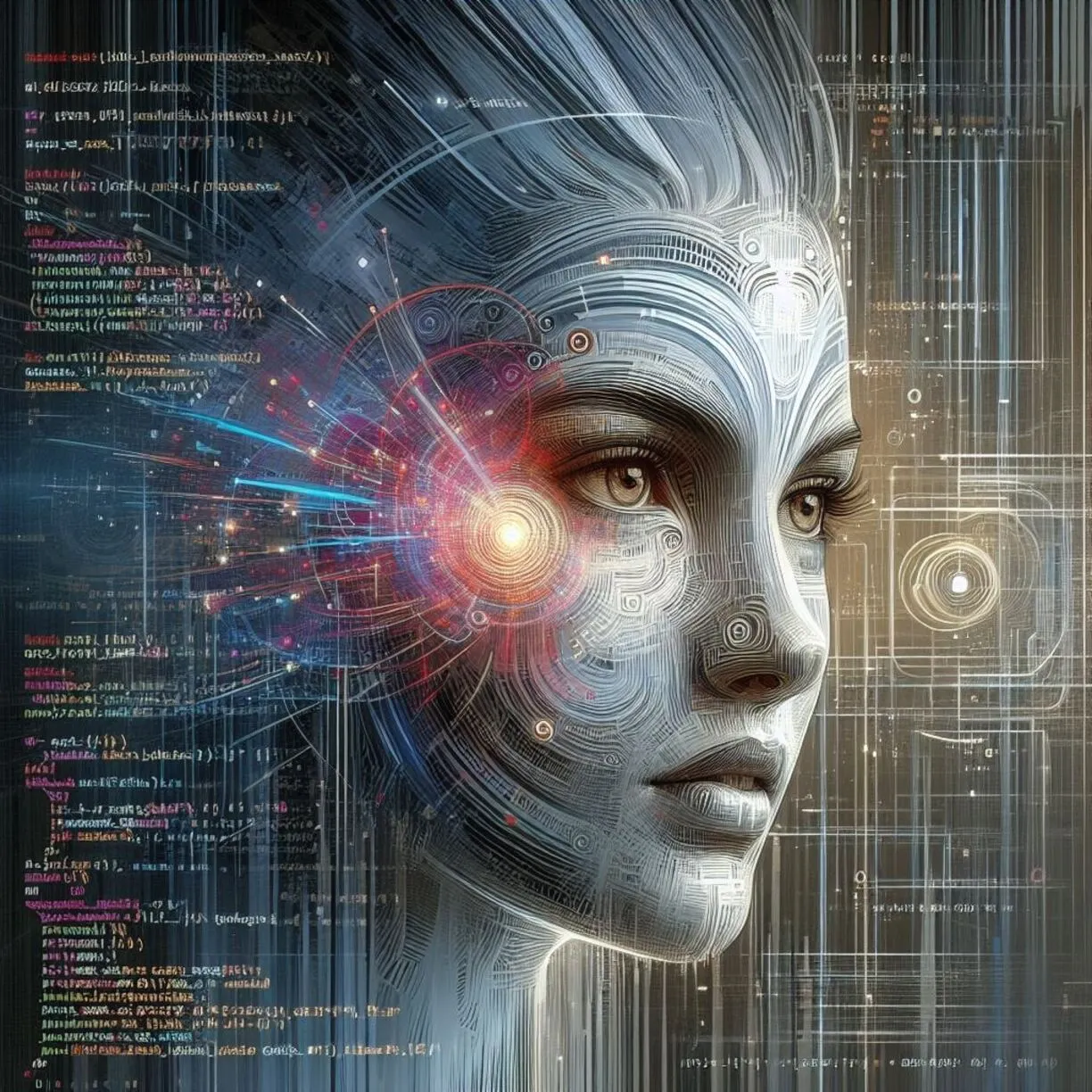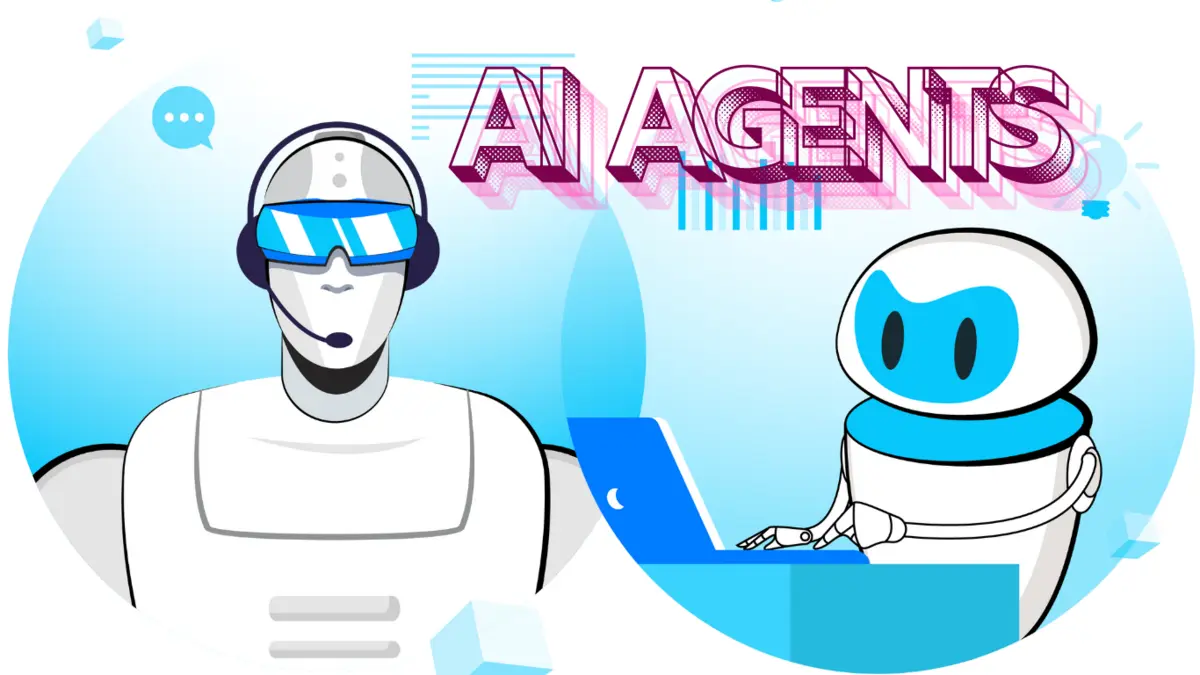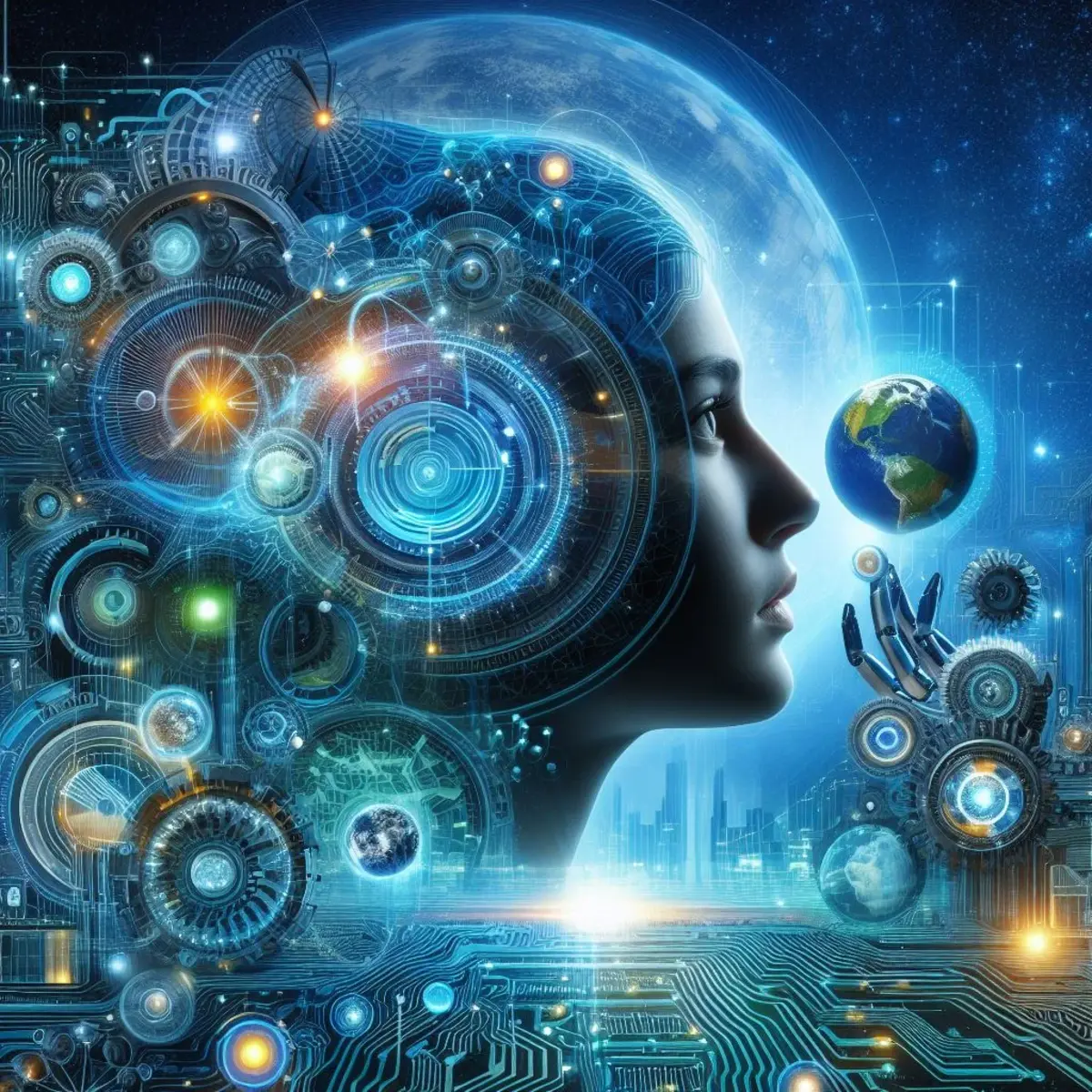Imagine a world where AI becomes not just a consumer of information, but a creator. A world where machines paint breathtaking landscapes, compose soul-stirring music, and craft compelling stories – all on their own. This, my friends, is the exciting realm of Generative AI.
Table of Contents
Gone are the days of AI simply analyzing and classifying data. Generative AI takes a bold leap forward, learning the intricate patterns and structures of human-created content to generate entirely new outputs. Whether it’s text, images, music, or even code, generative AI pushes the boundaries of creativity, blurring the lines between artist and machine.
How does this magic work?
Under the hood, generative AI models are powered by complex algorithms like neural networks. These networks are trained on massive datasets of existing content, meticulously learning the underlying rules and relationships. Imagine them digesting millions of novels to understand the art of storytelling, or analyzing countless paintings to grasp the nuances of composition and color.
Once trained, these AI wizards can then start conjuring their own creations. They predict the next word in a sentence, the next pixel in an image, or the next note in a melody, all in a way that mimics and even surpasses human capabilities. The results can be astonishing: AI-generated poems rivaling established poets, computer-composed symphonies that evoke genuine emotion, and digital paintings that capture the essence of a real-world scene with striking realism.

But the applications of Generative AI go far beyond artistic endeavors.
The ability to create synthetic data, for example, can revolutionize fields like drug discovery and materials science. Imagine testing thousands of virtual drug candidates before ever setting foot in a lab, or designing materials with tailored properties through simulated experiments. In business, AI can generate personalized marketing materials, create targeted product recommendations, and even craft captivating product descriptions.
Of course, this newfound power comes with responsibility. Concerns around ethics, bias, and deepfakes are valid and must be addressed. We need to ensure that generative AI is used for good, promoting creativity and progress while mitigating potential harms.

This is the dawn of a new era, where human and machine creativity intertwine to unlock unparalleled possibilities. Generative AI isn’t here to replace artists, musicians, or writers; it’s here to collaborate, inspire, and push the boundaries of what’s possible. So, fasten your seatbelts, folks, because the future of creation is looking remarkably bright, and AI is holding the paintbrush.
FAQs
1. What is meant by generative AI?
magine an AI not just analyzing data, but creating something entirely new. That’s generative AI! It uses its understanding of existing content (text, images, music, etc.) to generate novel outputs. Think of it as a creative machine, painting landscapes, composing music, or writing stories – all on its own!
2. Is GPT a generative AI?
Absolutely! GPT (Generative Pre-trained Transformer) stands out as a notable illustration of generative AI. It’s been trained on massive amounts of text data, allowing it to generate realistic and creative text formats, like poems, code, scripts, musical pieces, emails, and even blog posts!
3. What is the most famous generative AI?
Several generative AI models are making waves, but DALL-E 2 has gained widespread recognition for its ability to generate stunningly realistic images from text descriptions. Imagine typing “a cat wearing a cowboy hat riding a unicycle across a rainbow bridge” and seeing that come to life in a photorealistic image!
Unveiling the Wonders of Generative AI
1. Unleashing the Creativity Within: Free Generative AI:
- Free Art Studios: Dive into havens like NightCafe Creator and Dream by WOMBO, where anyone can conjure up stunning artistic landscapes, portraits, or abstract visions.
- Musical Masterpieces: Spark your inner maestro with MuseNet, where melodies blossom from mere text prompts, or Jukebox, where code whispers into existence as intricate musical compositions.
- Textual Playground: OpenAI Playground invites you to experiment with text generation, translation, and even code synthesis, all without breaking the bank.
2. Generative AI with a Desi Twist: Bringing Hindi to Life:
- Hindi-Speaking AI Companions: Meet Ava and Mukhabot, your AI assistants trained on Hindi data, ready to converse, translate, and even tell jokes in your native tongue.
- Breaking Language Barriers: Explore projects like IndicNLP’s efforts to create Hindi-specific generative models, paving the way for AI-powered storytelling and content creation in Hindi.
- Unleashing Creativity in Every Script: Showcase how generative AI can be used to generate poems, scripts, and marketing materials specifically tailored for Hindi-speaking audiences.
3. A Canvas of Possibilities: Examples of Generative AI in Action:
- From Landscapes to Lyrics: Paint a picture with words using Deep Dream Generator, or let OpenAI Jukebox turn your poems into symphonies that dance off the page.
- Code Creations and Culinary Concoctions: Witness AI write lines of code at your command with Codex, or let GPT-3 craft mouthwatering recipes that tantalize your taste buds.
- Beyond the Physical Realm: Explore how generative AI can be used to design virtual worlds, simulate scientific experiments, or even personalize educational experiences.
4. ChatGPT: The Conversational Canvas:
- The Power of Dialogue: Delve into ChatGPT’s ability to engage in natural conversations, translate languages seamlessly, and even write different kinds of creative content.
- Beyond ChatGPT: A Universe of Language Models: Compare and contrast ChatGPT with other powerhouses like GPT-3, Jurassic-1 Jumbo, and Megatron-Turing NLG, each with its own unique strengths and capabilities.
- The Ethical Conversation: Discuss concerns surrounding bias, misinformation, and the potential misuse of such powerful language models.
5. Google’s AI Garden: Blooming with Creativity:
- Tools for All: Duet AI in Google Workspace, Generative AI on Google Cloud: Explore how Google is making generative AI accessible, from personal assistants to powerful cloud platforms.
- Responsible AI at its Core: Highlight Google’s commitment to fair, accountable, and transparent AI development, guiding the future of Generative AI responsibly.
- A Glimpse into the Future: Uncover Google’s research in areas like multimodal generation, controllable AI outputs, and Explainable AI, pushing the boundaries of what’s possible.
6. Mastering the Craft: Courses for Every Aspiring AI Artist:
- From Beginner to Bard: Coursera, Udacity, edX: Recommend beginner-friendly courses that break down the fundamentals of generative AI, making it approachable for anyone.
- Deep Dives and Specialized Skills: Share specialized courses focusing on specific areas like generative art, music, text, or code generation, catering to advanced learners.
- Choosing the Right Path: Tips for Course Selection: Guide readers to select the course that best fits their goals, skill level, and preferred learning style.
7. A Toolbox for Creatives: Essential Generative AI Tools:
- Curated Collections: Free and Paid Gems: Create a categorized list of tools like NightCafe Creator for art, OpenAI Jukebox for music, and RunwayML for diverse multimedia creations.
- Honest Reviews and Feature Highlights: Offer concise descriptions and reviews of each tool, helping readers choose the ones that suit their needs best.
- Hidden Treasures and Niche Wonders: Introduce unique and lesser-known tools like Jukebox for code or Riffusion for AI-powered image editing, expanding the creative possibilities.
8. The Generative AI Wiki: A Collaborative Knowledge Bank:
- Wikipedia as Your Guide: Explain Wikipedia’s role as a centralized resource for key concepts, models, applications, and ethical considerations in generative AI.
- Joining the Collective Mind: Encourage readers to contribute their knowledge and experiences to the Wikipedia page, ensuring its accuracy and inclusivity.
- Beyond Wikipedia: Critical Thinking and Diverse Sources: Emphasize the importance of critically evaluating information on Wikipedia and consulting other reliable sources for well-rounded understanding.

Researchs
The field of generative AI is rapidly evolving, with new research papers and discoveries emerging constantly. To help you stay informed, here are some key areas of research in generative AI:
1. Model Architectures and Training Techniques:
- Developing new neural network architectures: Researchers are experimenting with novel network architectures specifically designed for generative tasks, such as transformers with improved attention mechanisms or generative adversarial networks (GANs) with better stability and control.
- Unsupervised and self-supervised learning: Moving beyond the need for large amounts of labeled data, researchers are exploring ways to train generative models using unlabeled data or by designing tasks that allow the model to learn representations on its own.
- Multimodal generation: Integrating different modalities like text, images, audio, and code is a growing area of research, enabling models to generate complex and coherent outputs that combine various forms of information.
2. Explainable AI and Interpretability:
- Understanding how generative models work: As these models become more complex, it’s crucial to understand how they generate their outputs and identify potential biases or errors. Research in explainable AI aims to shed light on the internal workings of these models.
- Controllable AI: Enabling users to guide the generation process with specific instructions or constraints is essential for real-world applications. Researchers are developing techniques to provide more control over the outputs of generative models.
3. Societal and Ethical Considerations:
- Bias and fairness: Generative models trained on biased data can perpetuate harmful stereotypes. Research is underway to mitigate bias and ensure fair and equitable outcomes from these models.
- Misinformation and deepfakes: Malicious actors can use generative AI to create realistic fake news or videos. Research is focused on detecting and combatting such misuse.
- The future of work and creativity: The rise of generative AI raises questions about its impact on jobs and the role of human creativity. Research explores how human and AI creativity can co-exist and benefit each other.
4. Specific Applications:
- Generative art and music: New techniques are enabling the creation of increasingly stunning and original works of art and music.
- Drug discovery and materials science: Generative AI can be used to design new molecules with desired properties, accelerating research in fields like medicine and materials science.
- Personalized experiences: Tailoring content, marketing, and recommendations to individual users is another promising application of generative AI.
Resources for staying up-to-date:
- arXiv: A repository of scientific papers, including many on generative AI.
- AI conferences and workshops: Events like NeurIPS and ICLR showcase cutting-edge research in the field.
- Blogs and websites of research institutions and labs: Many leading AI research institutions have blogs or websites where they share their latest findings.
- News articles and media coverage: Follow technology news outlets to stay informed about new developments in generative AI.
By following these areas of research and accessing relevant resources, you can stay ahead of the curve and understand the immense potential and challenges of generative AI.

Imagine a world where machines don’t just process information, but create it.**
Picture AI painting breathtaking landscapes, composing soul-stirring music, or writing captivating stories – all on its own. This, my friends, is the fascinating realm of Generative AI. It’s no longer science fiction; it’s the cutting edge of technology, blurring the lines between human and machine creativity.
Think of it as a digital artist with a limitless palette, trained on mountains of data like paintings, poems, and symphonies. It learns the patterns, the rules, the very essence of creativity, and then uses that knowledge to conjure up entirely new creations.
The result? Stunningly realistic images, hauntingly beautiful melodies, and even poems that rival human masters. It isn’t here to replace artists; it’s here to collaborate, inspire, and push the boundaries of what’s possible.
This is just a glimpse into the mind-bending world of Generative AI. Buckle up, because the future of creativity is looking remarkably bright, and AI is holding the paintbrush.
Ready to dive deeper? Stay tuned for the full article, where we’ll explore the how, the why, and the mind-blowing potential of this revolutionary technology.
Quotes:
Generative AI has the potential to change the world in ways that we can’t even imagine.
Bill Gates, Microsoft Co-founder
Generative AI is the most powerful tool for creativity that has ever been created. It has the potential to unleash a new era of human innovation.
Elon Musk, SpaceX and Tesla CEO
Mastering 3D Illusions with Bing Image Creator









